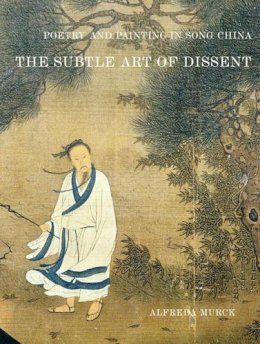
Poetry and Painting in Song China: The Subtle Art of Dissent (Harvard-Yenching Institute Monograph)
Alfreda Murck
Throughout the history of imperial China, the educated elite used various means to criticize government policies and actions. During the Song dynasty (960-1278), some members of this elite found an elegant and subtle means of dissent: landscape painting.
By examining literary archetypes, the titles of paintings, contemporary inscriptions, and the historical context, Alfreda Murck shows that certain paintings expressed strong political opinions—some transparent, others deliberately concealed. She argues that the coding of messages in seemingly innocuous paintings was an important factor in the growing respect for painting among the educated elite and that the capacity of painting's systems of reference to allow scholars to express dissent with impunity contributed to the art's vitality and longevity.
Product Details
About Alfreda Murck
Reviews for Poetry and Painting in Song China: The Subtle Art of Dissent (Harvard-Yenching Institute Monograph)
Susan E. Nelson
College Art Association Reviews
Focusing on one of the best-known themes in Chinese (and later, Japanese) ink-painting, from one of the pivotal moments in the formation of the painting-poetry relationship, this book delves into a classic example of polities turning to the arts for expression. And because the politicians of this dangerous time coded their painted-poetry with such subtle indirectness, Dr. Murck's inquiry unfolds like a good mystery undertaken by a master sleuth. Every reader, whether Asian scholar or arm-chair detective, will come away with a far deeper appreciation of the painting-poetry-politics triad in Chinese history.
Jerome Silbergeld, University of Washington and Princeton University Freda Murck's richly detailed book teaches us how to crack the code by which important Song scholar-artists expressed their anguished laments and political protests through seemingly innocuous landscape paintings. Explaining how secret messages were encoded in poetic allusions and translated into visual imagery, she uncovers a new and important dimension of Song literati painting. Through a series of ease studies, she shows how painting gained new expressive possibilities by adopting the functions, metaphors, and conventions of poetry.
Julia Murray, University of Wisconsin-Madison More than any other study, this brilliantly researched hook carries the reader into the intellectual environment of scholars, painters, and poets who created new forms of visual and verbal expression during the Song dynasty.
Robert E. Harrist, Jr., Columbia University
